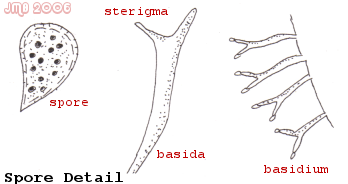|
Horn Of Plenty Morphology |

|
|
Common Name |
Horn Of Plenty |
Scientific Name |
Craterellus cornucopoides |
|
Morphological Description |
Growing Body: An underground sepate (divided by partitions) mycelium of interconnecting hyphae (branching filaments) forming a cotton wool mass, which lives in ectotrophic symbiosis with Fagus Sylvatica and Quercus rubra. It is perennial and reproduces by an above ground fruiting body which disperses spores by wind. It occurs in gregarious or clustered groups, locally abundant but occasional. |

|
|
Collated by James M. Burton as part of H.N.D. course at Pencoed
Agricultural College. Taxanomical information correct as of 06:06:97.